5 Ways To Reduce Waste In The Bathroom
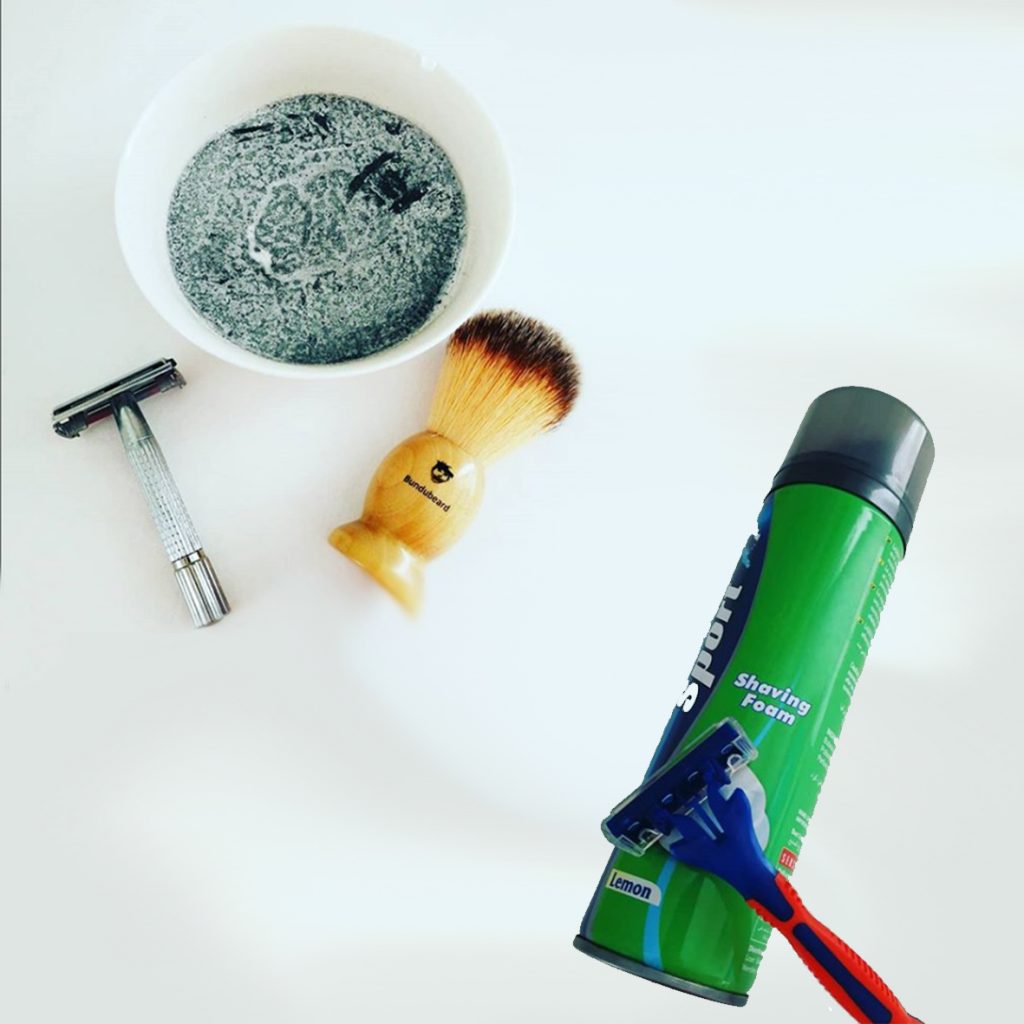
Have you ever opened your bathroom cupboards and wondered how will you ever replace some of the plastic you find? I know exactly how you feel. A few years ago I too opened my cupboards and found a lot of plastic and did not know where to start to reduce the amount of plastic waste.
But before we get to the changes I’d like to say that you do not have to throw out every single thing because it is plastic. If the item is still usable and you do not feel that it is a danger to your health, use it till it is time to replace the item. If you feel you no longer want to use the item due to health reasons, maybe find someone that will use the items, or would have purchased it anyway. If the items are already in your cupboard you or someone else might as well get some use out of it, rather than throwing it away.
Over the last few years, there have been many swaps that I have made, and the more I made it the easier it seems to make the next change.
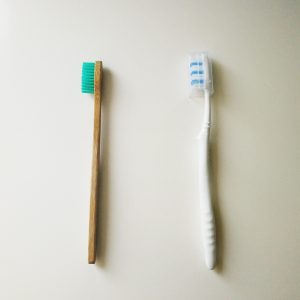 One of the first switches that I made was by switching my plastic toothbrush for a biodegradable option like a bamboo toothbrush. It might not sound like something that will have a massive impact but every single toothbrush that you ever used, probably still exists somewhere. In the US, 850 million toothbrushes are discarded off per year. Therefore every toothbrush really makes such a difference and is such an easy swap.
One of the first switches that I made was by switching my plastic toothbrush for a biodegradable option like a bamboo toothbrush. It might not sound like something that will have a massive impact but every single toothbrush that you ever used, probably still exists somewhere. In the US, 850 million toothbrushes are discarded off per year. Therefore every toothbrush really makes such a difference and is such an easy swap.
The Bamboo toothbrushes handles are biodegradable, environmentally sustainable and do not pollute the environment. Bamboo’s growth and self-renewing ability also means that deforestation is also not necessary to produce the products. When the time comes to switch out my toothbrush, I try my best to give it a second life first, by using it for cleaning around the house (Make sure you mark your house cleaning toothbrush and keep it with your cleaning products, not to ever confuse the two), before composting the toothbrush.
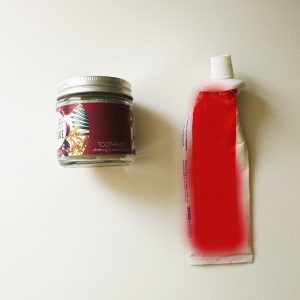 The second switch that I made was to switch my toothpaste. We send about a billion toothpaste tubes to the landfills every single year. The packaging might look like just a plastic tube, but most of them are a combination of plastic and foil. This makes it hard to recycle as the cost of recycling is very high, therefore these toothpaste tubes often head to a landfill instead.
The second switch that I made was to switch my toothpaste. We send about a billion toothpaste tubes to the landfills every single year. The packaging might look like just a plastic tube, but most of them are a combination of plastic and foil. This makes it hard to recycle as the cost of recycling is very high, therefore these toothpaste tubes often head to a landfill instead.
Over the last few years, the sustainable toothpaste options available on the market have for sure increased. If you have a bulk store near you they might sell some great options, package free. This can be anything from toothy tabs (small pills that you bite and then brush your teeth.), a powder to a toothpaste that is similar in consistency to what we are used to. I have also found some great options at the grocery stores that are packed in aluminium with a plastic cap that can both be recycled with your kerbside recycling. There are a few brands that are selling their toothpaste in glass jars as well. Therefore maybe try one the next time you need to purchase a new toothpaste. There are also many easy DIY recipes that you can also give a go.
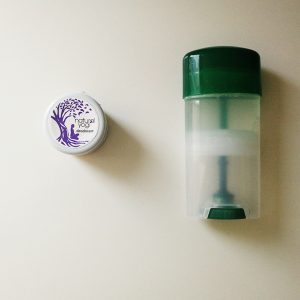 The third item is deodorants. They are often made from a variety of different plastic that is not easy to separate from each other, making it hard to recycle. Terracycle has a program that offers to recycle these items and if you have a store with a bin close by, you can recycle with them. If not the empty containers are likely to end up in a landfill. There are many DIY recipes available. The first deodorant switch that I made was a deodorant in a small glass jar, made from organic ingredients that I loved. It can sometimes be a bit hit and miss at first when purchasing a new deodorant. There are many places that might even offer you a small tester if you bring your own container. I loved using these deodorants, but that was before I discovered a potassium crystal deodorant stick. It has been a life-changer! It is super easy to use. I simply just wet the crystal, apply it like you do any roll-on and then rinse it off again. The crystal can last for many years. I do sometimes sweat when wearing it, especially when outdoors in the middle of the summer, but there is absolutely no odour. It has been a great saving as I have not had to purchase a deodorant for months and once the crystal is finished the cork holder can be upcycled.
The third item is deodorants. They are often made from a variety of different plastic that is not easy to separate from each other, making it hard to recycle. Terracycle has a program that offers to recycle these items and if you have a store with a bin close by, you can recycle with them. If not the empty containers are likely to end up in a landfill. There are many DIY recipes available. The first deodorant switch that I made was a deodorant in a small glass jar, made from organic ingredients that I loved. It can sometimes be a bit hit and miss at first when purchasing a new deodorant. There are many places that might even offer you a small tester if you bring your own container. I loved using these deodorants, but that was before I discovered a potassium crystal deodorant stick. It has been a life-changer! It is super easy to use. I simply just wet the crystal, apply it like you do any roll-on and then rinse it off again. The crystal can last for many years. I do sometimes sweat when wearing it, especially when outdoors in the middle of the summer, but there is absolutely no odour. It has been a great saving as I have not had to purchase a deodorant for months and once the crystal is finished the cork holder can be upcycled.
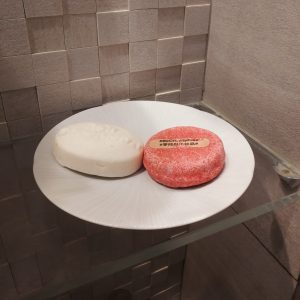 The fourth product is some of the containers that overflow our shelves in the shower like shower gels, shampoo, conditioner and face washes. There are many plastic-free alternatives for them. If you are in the US, you can order Plaine Products (We had the CEO, Lindsey McCoy on the podcast). They offer a program where you can return your empty containers with your next order and they will wash and sanitize and refill it. There are also many stores that sell these items in bulk and you can fill your containers. If you do not have access to the bulk stores, you can easily switch to using a product that comes in a bar or try to make your own. I have previously made my own body wash for bars of soap, that I then store in a glass dispenser for easy use.
The fourth product is some of the containers that overflow our shelves in the shower like shower gels, shampoo, conditioner and face washes. There are many plastic-free alternatives for them. If you are in the US, you can order Plaine Products (We had the CEO, Lindsey McCoy on the podcast). They offer a program where you can return your empty containers with your next order and they will wash and sanitize and refill it. There are also many stores that sell these items in bulk and you can fill your containers. If you do not have access to the bulk stores, you can easily switch to using a product that comes in a bar or try to make your own. I have previously made my own body wash for bars of soap, that I then store in a glass dispenser for easy use.
Civilizations have been using soap bars since 2800BC and we still get some great bars today. Shampoo bars is something that was introduced more recently and in the last 20 years, more companies around the world started to produce shampoo bars. They might seem expensive at first, but most of them can last up to 80 washes, a lot more than your average shampoo bottle.
You can also find conditioners in a bar as well as facial products. What I love about these is that when the product is finished, you are left with no packaging and a lot of them are packaged either in a paper or package-free, really reducing the amount of packaging a lot.
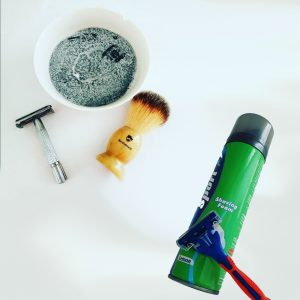 The fifth switch is the way you shave. If you use a disposable razor, switch to an old-school double edge safety razor as well as an old-school natural shaving cream. This will not only be great for the planet but also great for your wallet. We throw away 2 Billion disposable razors every year, with most of these ending in the landfill. The first time I tried a double edge safety razor, I was a bit scared, as that blade looked super sharp, but I quickly got the hang of it. The initial investment for my razor was a bit more than the average razors at your local supermarket, but it should last you a lot longer. Replacing the blades is easy, and the blades are a lot cheaper compared to all the fancy branded razor blades you purchase from the local supermarkets.
The fifth switch is the way you shave. If you use a disposable razor, switch to an old-school double edge safety razor as well as an old-school natural shaving cream. This will not only be great for the planet but also great for your wallet. We throw away 2 Billion disposable razors every year, with most of these ending in the landfill. The first time I tried a double edge safety razor, I was a bit scared, as that blade looked super sharp, but I quickly got the hang of it. The initial investment for my razor was a bit more than the average razors at your local supermarket, but it should last you a lot longer. Replacing the blades is easy, and the blades are a lot cheaper compared to all the fancy branded razor blades you purchase from the local supermarkets.
For the shaving cream, I replaced the standard foaming can, with an old-school natural shaving cream and brush. There are many different types available online, your local shaving store might also stock them, otherwise, most of the package free stores should stock them. I bought a shaving bar that I use with my shaving cream brush, but you also get shaving cream in aluminium tubes that can be recycled with most kerbside recycling.
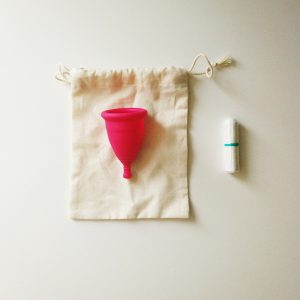 The sixt swap is for the ladies, and this is something that we have to deal with every single month. Tampons or sanitary napkins can be switched to reusable menstrual cups, sanitary pads or period undies.
The sixt swap is for the ladies, and this is something that we have to deal with every single month. Tampons or sanitary napkins can be switched to reusable menstrual cups, sanitary pads or period undies.
This was something that took me some time to do as I was just not too sure about this and the fact that I had to clean the menstrual cup out every time sounded a bit disgusting at first, but my plastic period for sure came with a heavy price tag for me and the environment. The average woman gets her period about 450 times in her lifetime and uses on average 11,000 disposable tampons or pads in her lifetime and can cost you thousands of dollars over years and create a lot of waste.
Because tampons and sanitary pads have been used to capture human waste, they are not recyclable. Many of us flush them away, and they end up in our sewer system and waterways. A lot of them end up in a landfill. Organic cotton tampons are technically biodegradable and compostable. However, they take a very long time to break down. Then there is also the packaging of the items to consider. Some of the cardboard applicators and packaging can often be recycled, however some of the plastic applicators, wrapping and packaging usually cannot, and they end up in a landfill or ocean. In 2015 the Ocean Conservancy collected 27,938 used tampons and applicators on beaches all around the world in a single day.
I have invested in two menstrual cups and a few reusable sanitary pads and I was surprised at how well they work. It has reduced the amount of waste I send to the landfill. The initial cost was more expensive than you would pay for your disposable, but by reusing the products instead of purchasing the single-use items monthly I have really saved a lot.
There are many more tips and advice to reduce your waste in the bathroom, but I recommend evaluating your bathroom and seeing what items you are currently using on a regular basis that is easy to switch. You can also look at some of the existing items you have and find more sustainable replacement options that you can purchase once they are finished. If you are unsure of what you use the most of in your bathroom, maybe consider doing a bin audit to find out where to start to reduce your waste.
You might be using a lot of cotton makeup remover pads and can switch them for a washable makeup remover pad. If you use a lot of q-tips, you can maybe switch to a more sustainable option or invest in a Last Swab (We had the co-founder, Isabel Aagaard on the podcast).
Start with what you can and with what you feel comfortable with. Living a more sustainable life is a journey and not a race.


These tips are really helpful if we want to adopt a zero-waste lifestyle.These tips will definitely help to reduce our negative impact on the environment.Everyone should follow these easy to go tips.